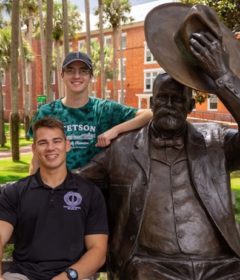Celebrating 140 Years: 1933-1942, Decade of a Music First
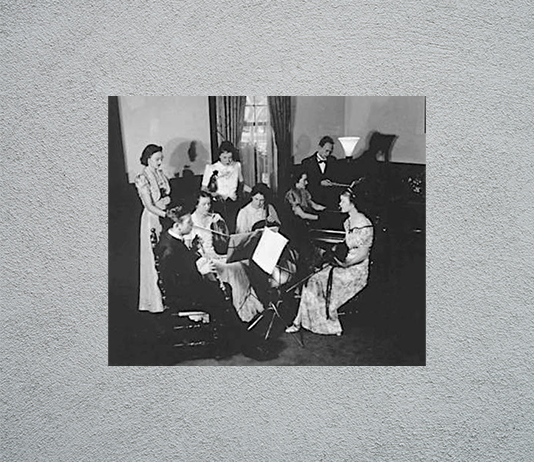
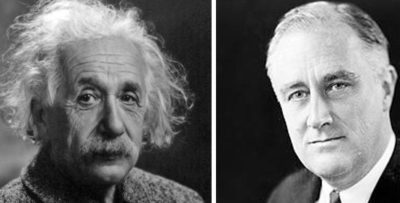
1933 — It was the year that witnessed the first singing telegram, the inauguration of President Franklin Delano Roosevelt, the first flight over Mount Everest, the first Major League All-Star Game as well as the first National Football League game, and the arrival in the United States of scientist Albert Einstein — also Stetson entered its sixth decade of existence.
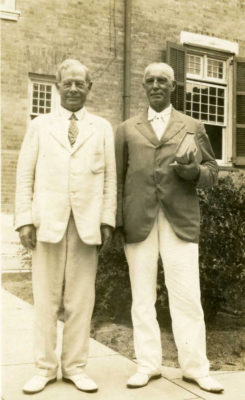
The university turned 50 in 1933 and was very much going a period of ups and downs, many of them due to world circumstances. That year, university officials commissioned the design of a clarion tower and mausoleum. The monument, a gift to Stetson by its president, Lincoln Hulley, ultimately was completed in 1934, after the president had died in office.
Yet, the Great Depression presented deep financial hurdles, with income from endowments declining even as enrollment increased, reaching 710 students in 1938. The university could only afford the construction of one new structure, Commons Hall, built in 1936 and destroyed in a fire 18 years later.
Technically, the Holler Fountain was also built during the decade, in DeLand in 1937. The fountain, however, was part of a traveling exhibit that made its debut in Cleveland, Ohio, at the Great Lakes Exposition of 1937 and was part of New York City’s World’s Fair of 1939. It wasn’t until June 1951 that the fountain was installed at the center of campus, known back then as the Quad.
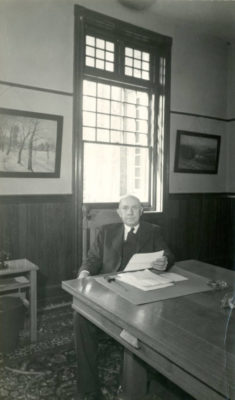
The university’s president during much of the decade was William Sims Allen, who served from 1934 to 1947. Allen graduated from Baylor University and earned advanced degrees from Columbia University. Allen returned to Baylor where he served as vice president and chairman of the school of education prior to coming to Stetson at age 46. His inaugural address was carried over the first Florida statewide radio transmission.
During his time in office, Stetson grew from a few hundred students to 2,000. To deal with the rapid growth, Allen initiated a program of expansion that included establishing separate schools. One was the School of Music, which in 1936 came into being as Florida’s first collegiate school of music.
For many years, the School of Music was housed in DeLand Hall,
the oldest building on campus as well as the oldest building of higher education in Florida. (In December 1969, the music students and faculty moved into Theodore Presser Hall, the newest academic building on campus at the time.)

Today, the School of Music is rated as one of the nation’s best undergraduate-only music schools. There is a select student enrollment of more than 200 majors and minors, with performance opportunities that encompass the symphony orchestra, band, choirs, opera, musical theater, jazz, chamber music and solo recitals. In 1938, the School of Music became an accredited member of the National Association of Schools of Music.
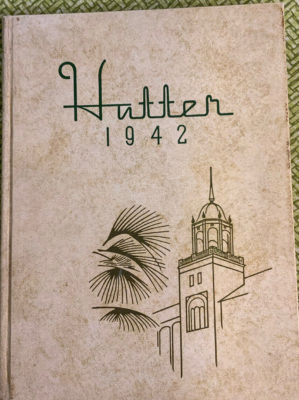
1942 — The final year of Stetson’s sixth decade represented another sign of uneven times impacting campus life, as well as eventual triumph. Stetson University College of Law was closed that year until 1946 due to World War II. In 1954, though, Stetson Law was relocated to Gulfport, where it continues to thrive as the No. 1 law school nationwide for Trial Advocacy (per U.S. News & World Report).
Learn more about Stetson’s 140-year anniversary and join in on the celebration throughout the fall.
-Michael Candelaria and Stetson University Archives


